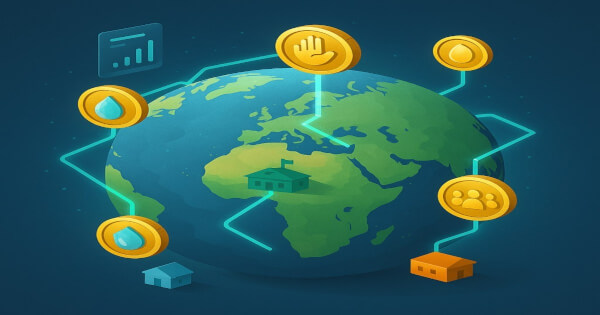World Bank Issues Poverty-Reduction Bonds on Polygon, Leveraging Real-Time Impact Verification
Khushi V Rangdhol Oct 20, 2025 22:28
The World Bank is issuing poverty-reduction bonds on Polygon, enabling real-time impact verification and increasing transparency in social development funding.

A New Paradigm for Social Impact Investing
The World Bank has begun issuing poverty-reduction bonds on Polygon, marking a significant evolution in how capital markets support social development. Unlike traditional bonds, these blockchain-based instruments let investors monitor the use and impact of funds in real time, increasing transparency and accountability in anti-poverty efforts.
How Do Polygon-Powered Impact Bonds Work?
These bonds are settled directly on Polygon’s public blockchain, with each transaction and disbursement recorded immutably. World Bank's proprietary FundsChain tool allows stakeholders—development partners, auditors, and even end beneficiaries—to track disbursements. Triggered smart contracts report updates on project milestones, such as the completion of a school, clean water access, or direct cash transfers, giving investors proof of results as they happen.
Real-Time Impact Verification: The Technical Leap
Smart contracts on Polygon link bond payments to digital metrics. If a specified amount of poverty-alleviation aid is delivered, the blockchain updates the bond status, and impact certificates are automatically verified and logged. Mobile access brings more engagement for local communities and global investors, promoting both financial inclusion and trust in development work.
Scaling and Predictions
FundsChain has already tracked project funds in 13 countries and aims to scale to hundreds of World Bank projects by 2026. Analysts predict that tokenized impact bonds could reach billions in annual global issuance if adopted by more public sector entities and NGOs, transforming how humanitarian and ESG finance is funded and measured.
Current Status and Potential
While the core system is confirmed for use in select poverty-reduction programs, broader adoption and scaling remain subject to further regulatory approval, technical refinement, and results evaluation. If successful, this blockchain-driven model could set the template for other multilaterals, national governments, and philanthropic organizations.
Conclusion
By issuing tokenized poverty-reduction bonds on Polygon and deploying real-time verification, the World Bank is bringing new levels of transparency and efficiency to global aid and sustainable development finance. This shift has the potential to reshape trust and funding in impact-driven capital markets worldwide.
Sources: worldbank.org, icmagroup.org, worldbank.org, dcfoundation.io, worldbank.org
Image source: Shutterstock
.jpg)